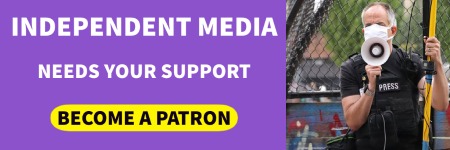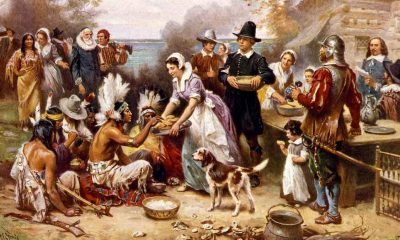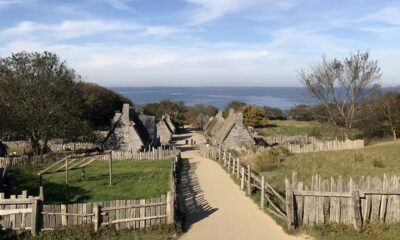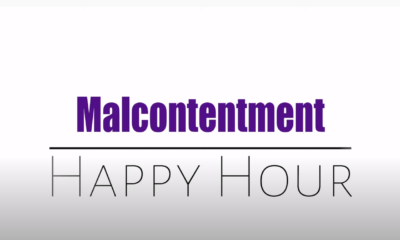BIPOC
Special Report: Everything you think you know about Thanksgiving is wrong
Charlie Brown and the US education system got it wrong.
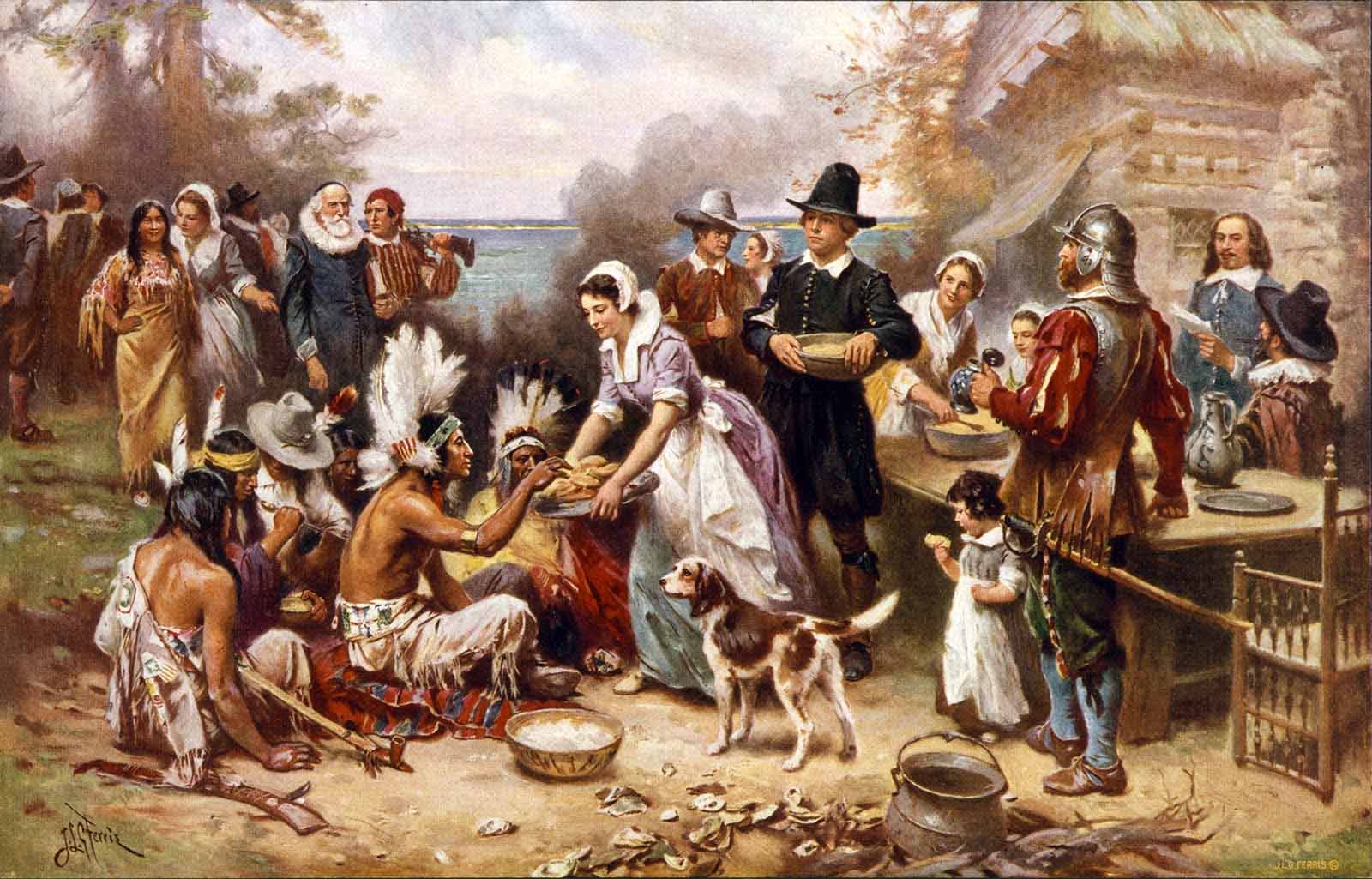
Most of us envision a romantic portrayal of Thanksgiving. Pilgrims, seeking freedom, come to the new land, and in peaceful cooperation with the Native Americans carve out a hardscrabble life. After a good harvest in their first year, the Pilgrims invite the local Native Americans for a feast, everyone ate turkey, and all were happy — the end.
There is also a revisionist story to Thanksgiving that the creation of the holiday is a blood-soaked nightmare. After the massacre of Native Americans, it was celebrated annually with a big turkey dinner to give thanks for the divine providence to clear the land of heathens.
Neither of these narratives is correct, and the story lies somewhere between.
The Pilgrim’s trip was financed by business interests who would buy cash crops from the Pilgrims upon the establishment of a colony in the new world, somewhere in the vicinity of modern New York City, south of the 42nd parallel, along the New Jersey coast. The story of that hurricane and the Mayflower almost sinking? True.
The sailing of the Pilgrims was supposed to be on two ships, the Mayflower and the Speedwell. The Speedwell was an unseaworthy wreck and waiting to attempt to repair her resulted in the crossing happening at the height of hurricane season. Instead of 65 onboard, there were 130 along with sheep, dogs, chickens, and goats. The settlers would not have been allowed on deck, so would have spent most of their time in the foul, smoke-filled air, smelling of waste and bilge, in a rolling sea. If it sounds awful, you’re right, it was.
The story of the printing press being used to secure a cracked timber in the Mayflower? Sort of true. A tool called a jackscrew, which is similar in appearance, was used to save the ship.
When the Pilgrims finally landed, they had been blown hopelessly off course and landed on what is today Cape Cod, not Plymouth. They sent a shore excursion and found the native population hostile. The real story is that white traders and fishermen had been coming to the northeast coast for decades to trade, trap, fish, and take slaves.
Realizing they had blown off course and were north of the 42 parallel, they created the Mayflower Compact, a bit of a dubious agreement of self-government with loyalty to the King of England. It was the first Democracy in the new world.
The Mayflower sailed around Cape Cod looking for safe harbor, and they arrived off what is modern-day Plymouth. There is no Plymouth rock (sorry) that the Pilgrims stepped out on, and if there were, centuries of weather would have sent it up onto the shore or back out to the sea. A small party scouted the land, and much to their amazement, found it cleared, developed, and abandoned. They found signs that something catastrophic had happened to the local peoples, including dried corn and meats in crumbling longhouses, and some hurriedly dug graves. They saw this as divine providence that God had cleared this land for them.
What had happened was a great plague had swept North America in the late 1500s, killing about 90% of the population on the continent. It is one of the worst human population die-offs in the history of the world. The common belief is that early whites brought smallpox and other diseases to the land, but that doesn’t hold up to native accounts from countless tribes, including those who never made contact with the whites. They all describe a fever, that is more like a severe virus or flu unique to the continent. No one ever reported the telltale boils of smallpox or the red rash of measles.
Fearful of establishing a colony in a lightly scouted area, the Pilgrims elected to stay on the Mayflower. The conditions were in a word, horrific, and that winter was extremely harsh. Shore excursions could find almost no game, and arriving in October, the growing season in New England had long passed. By March of 1621, only 53 passengers and half the crew were alive. Of those, most were very ill, suffering from scurvy, dysentery, and malnutrition. The Mayflower sailed back to England in April of 1621, taking with it water in its drinking casks instead of beer, which was the chosen drink (even for infants and children). The investors were angry when the Mayflower arrived on its return voyage, empty of any riches from the new land.
Weak, sick, and with little success, the colonists started building their village in Plymouth, under the watchful eye of the Wampanoag and Nauset. The great plague had left only 10% of the Wampanoag and a handful of Nauset as survivors. A debate raged on what to do with these visitors. The warriors advised chief Massasoit to kill them. They were weak, the track record of dealing with whites was bleak, and they could easily crush the colonists. Some debated to leave them alone. Let nature takes its path with the ill-prepared whites slowly dying off. They argued that most of the population was women and children and they appeared to have no understanding of the land.
Massasoit had other problems, enemies laid to the west in the Narraganset, and he had no way to defend his people. The settlers had iron tools, and he felt that an alliance could help protect his people, and they could trade for items. He also thought that it was the moral thing to do.
Much to the colonists’ shock on March 16, 1621, an Eastern Abenaki Native American named Samoset (also spelled Somerset) walked right into the Pilgrim settlement. He said in English, “Hello Englishmen!” He stayed for the night, asking for beer, and told the settlers that he would bring others. The next day they arrived seeking to trade with skins, but being a Sunday, the Pilgrims refused. On March 22, 1621, Samoset returned, with four warriors and Squanto, a Wampanoag.
Squanto is a complex character in this story. Captured along with Samoset by white traders, he was taken in as a slave in England, where he learned English and English customs. Listening to his captors, he discovered they were obsessed with a metal – gold. Squanto hatched a plan to get back home and escape, telling them he knew where gold was in the new world, and he could show them with the help of Samoset. An expedition went back to the northeast coast. At the first opportunity, Samoset and Squanto escaped, and no vast treasure was found.
Squanto and Samoset came back to North America to discover their nations were wiped out by disease, and their people viewing them with distrust. They had not suffered during the last decade, in the minds of the survivors of the plague, while the Wampanoag and Abenaki died. Squanto was never fully trusted for the rest of his days.
Enter the other character in this story, Edward Winslow. During that meeting on March 22, the Wampanoag demanded they receive a hostage before holding talks because they did not trust the whites. After some discussion, Edward Winslow was selected, volunteered, or was voluntold – depending on which account you follow. A peace treaty was negotiated. Squanto was left behind under the guise he would provide aid to the settlers. In reality, he was left behind to serve as a spy for Massasoit.
The story of Squanto teaching the Pilgrims to plant Indian Wheat (corn as we call it today), how to fertilize the soil with fish and lobsters, where and how to hunt the native animals, how to fish the native streams, and identify edible plants are all true. Had Squanto not helped the Pilgrims, the colony would have likely failed by the winter of 1621-22.
The exact date of the first Thanksgiving is not known, but it was in the fall or early winter of 1621. The Pilgrims were in a much better state through the help of Squanto, Massasoit, and the Wampanoag/Nauset. However, the story you were taught in school – not remotely true.
Sometime in the late fall or early winter, a large contingent of the surviving Wampanoag showed up at the Plymouth colony, about 90 to 100 people. The Pilgrims numbered 53 when they made landfall in March of 1621 and had dwindled to 47. So those paintings of lots of Pilgrims and a few Native Americans? Not true.
The Wampanoag brought with them, among other things, five killed deer. For the Pilgrims and English society in 1621, venison was like bring lobster, filet minion, veal chops, and toro sushi all at the same time to someone’s house. The Wampanoag said to paraphrase heavily, “we’re going to have a feast – here.“
The Pilgrims accepted the offer (not that there was much choice), and of course, provided their food to add to the feast. Wild turkey might have been on the menu, but the real food of choice for the first Thanksgiving was – venison. In an ironic twist, the feast went on for three days. The Puritans were against all forms of sin, and a three-day feast of food and alcohol check off the” gluttony” box. In addition, there are reports of gambling, trade, and exchange of stories.
So that is the real story of the first Thanksgiving.
As for celebrations after? They happened sporadically on years of a good harvest. The Wampanoag/Nauset enjoyed an increasingly shaky peace with the settlers until 1674 – just 53 years. By then, all of the surviving original Pilgrims had died. With it, the understanding of the incredible debt owed to the Wampanoag and Chief Massasoit. Boston had grown to the second-largest city in North America, behind New York.
Edward Winslow came to be a trusted friend of Massasoit. In 1623 Massasoit fell gravely ill, possibly from the same illness that killed most of the natives almost two decades earlier. Edward Winslow was sent for by Massasoit, as were other area chiefs, to sit with the sick leader and to be there for his passing. Edward Winslow personally nursed his friend, and Massasoit survived. A bond was formed in the longhouse that would last until Massasoit’s death. Sadly, it would be Massasoit’s son and Winslow’s son that would undo their hard work and lay the foundation for King Phillips War – more on that later.
Ships laden with more settlers arrived almost daily, and Edward Winslow’s son, Josiah, who became governor of the Plymouth Colony, held the native population in contempt. Metacomet, also known as Phillip by his baptized name, was Massasoit’s third son and became the leader of Wampanoag.
In 1671 Josiah humiliated Metacomet forcibly disarming him and his warriors and making them sign a very one-sided treaty. The Wampanoag became subjugated unless they would conscript themselves to “praying towns,” giving up their ways and following both the Christian God and the English ways in all aspects. To meet these requirements, increasing numbers of indigenous peoples moved into “praying towns.”
By 1674 rumors of war swept the land. Fear had grown so large that in December, over 300 Wampanoag and Nauset who were living in praying towns were rounded up. They brought men, women, and children to Deer Island in Boston Harbor. With no food, drinking water, shelter, or way to keep warm, the entire population froze to death.
In 1675, under the orders of Josiah Winslow, three Wampanoag were hung from a tree for the murder of a John Sasamon. No one knows how John died, whether it was murder, an accident, or suicide. Did he fall through the ice of Assawmpset Pond? The trial to this day is considered make-believe, and one of the hanged included a close friend of Metacomet.
In response, Metacomet declared an open guerrilla war on the colonists. Over the next three years, the bloodiest conflict in the continent’s history was fought, with over 10% of the settler population killed and entire towns wiped off the map. There was an open discussion about evacuating the colonies in the early stages of the war due to the ruthless violence of the Wampanoag and supporting tribes.
In the end, Metacoment’s family was murdered, which broke his spirit, and literally, broke him. Despite an offer from the governor of Rhode Island for sanctuary for him and the straggling survivors of his people, he allowed himself to be captured. Metacomet was tried, found guilty of treason, hung, quartered, and beheaded. His head was put on display and left for years. The Wampanoag and their supporters were eradicated. The rest is as they say…history.

